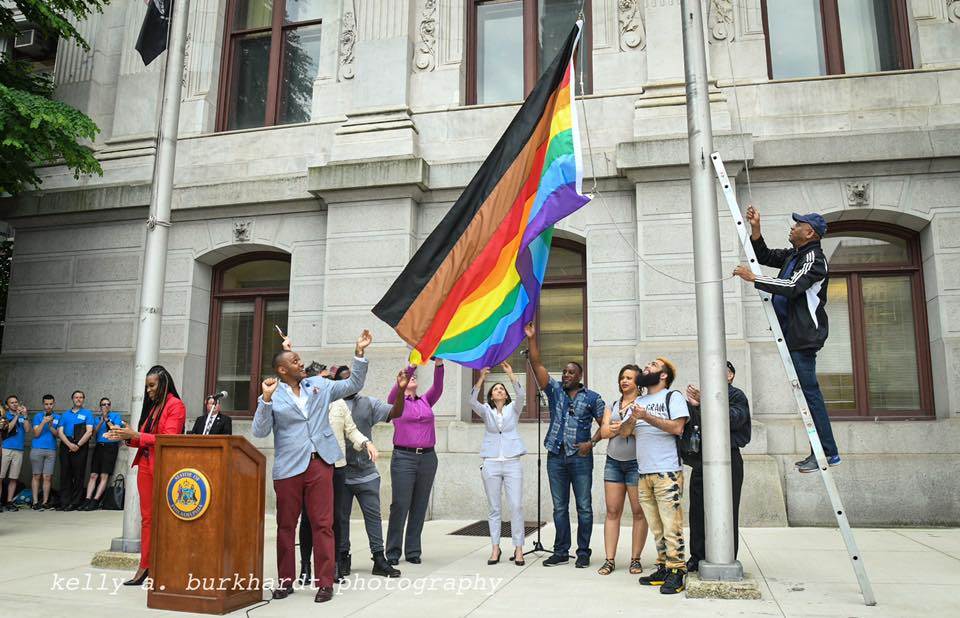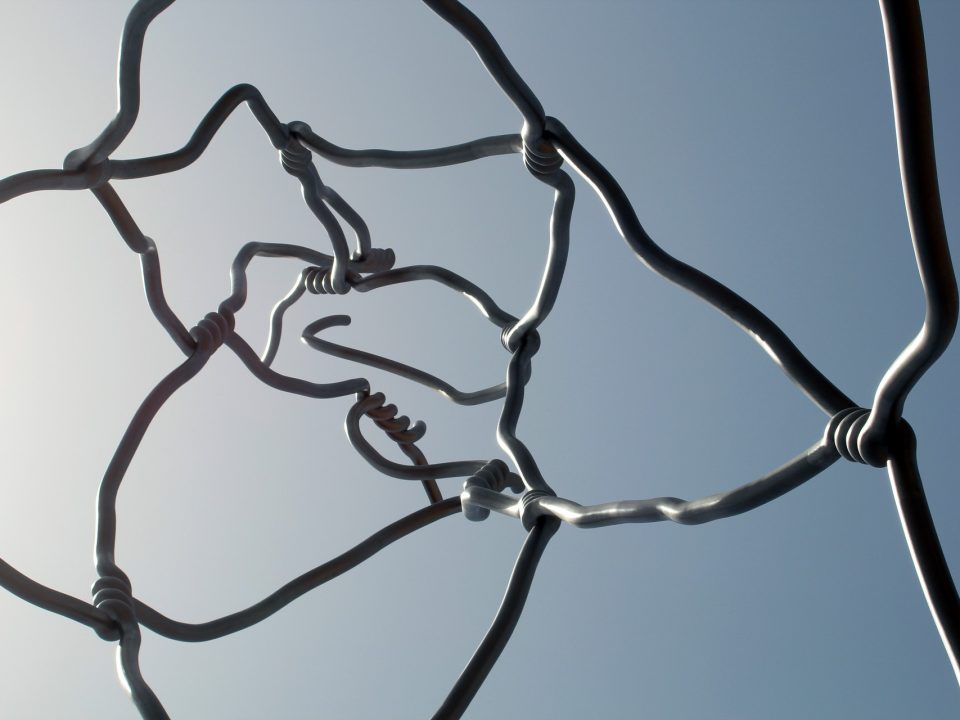New Colors in Pride Flag Spark Mixed Feelings in LGBTQ Community

Every member of the LGBTQ community and ally is used to seeing the Pride flag, with its defiantly bright rainbow colors. A redesigned Pride flag flew outside City Hall during a recent event, and some members of the community are reacting with mixed emotions. Stripes of brown and black have been added to the rainbow flag, a move that proponents say is meant to symbolize the contributions and inclusion of non-white LGBTQ people in the ongoing struggle for equal rights.

The new rainbow flag, meant to represent LGBTQ individuals of all races, is shown being lifted outside of City Hall. (AP Photo/ Kelly Burkhardt)
Amber Hikes, the new executive director of Philadelphia’s Office of LGBT Affairs and herself a queer woman of color, explained it thusly: ““It’s a push for people to start listening to people of color in our community, start hearing what they’re saying, and really to believe them and to step up and say, ‘What can I do to help eradicate these issues in our community?” Philadelphia has an especial need to hear the message, she says, claiming that racism runs rampant in Philly’s “Gayborhood.”
The first iteration of the rainbow Pride flag was designed about 40 years ago by LGBTQ advocate Gilbert Baker, who died in March. To some, Baker’s original rainbow flag was already meant to be inclusive, and the addition of extra colors seems borderline offensive. Baker’s longtime friend Charley Beal was quoted as saying that people should not confuse the new flag with Baker’s original: “The stripes were not chosen for skin color — they were chosen to reflect the spectrum of color in nature,” Beal explained. In other words, the rainbow was originally meant to represent people of all skin colors.
According to the local NBC affiliate, “Despite the controversy surrounding it, the black and brown flag has grown increasingly popular since its unveiling. Hikes has received requests from LGBTQ groups across the country that want to march with the flag in their Pride events. But her office has also received many angry responses — mostly from white gay men — who feel the black and brown stripes are unnecessary, she said.”
Hikes maintains that there is never anything wrong with taking a symbol of inclusivity and making it more inclusive.



